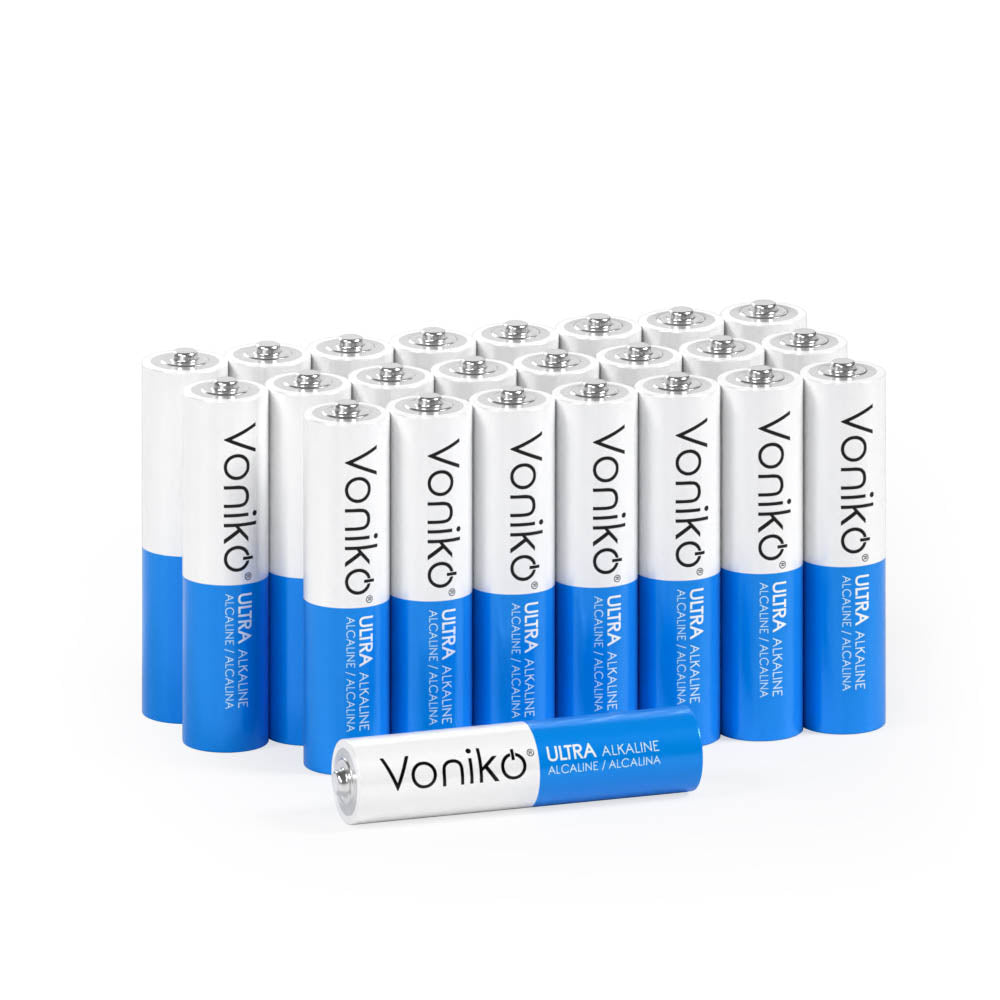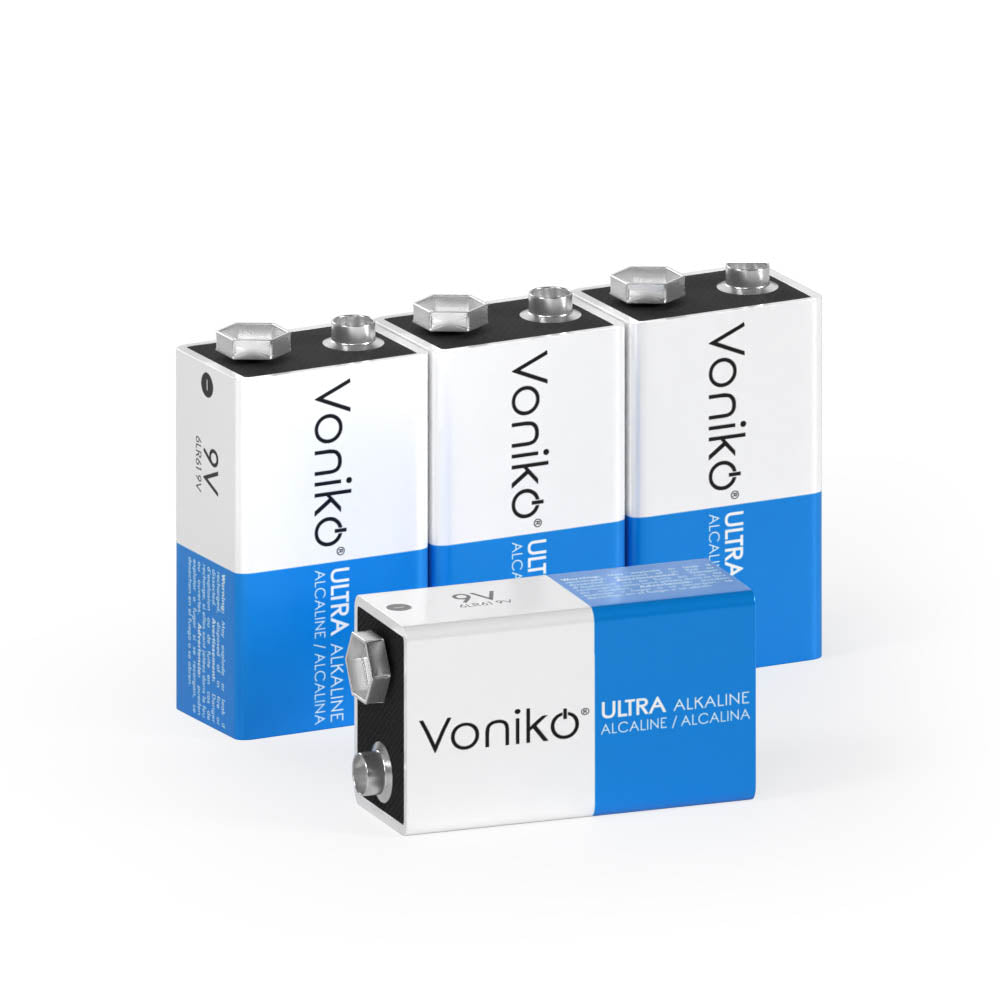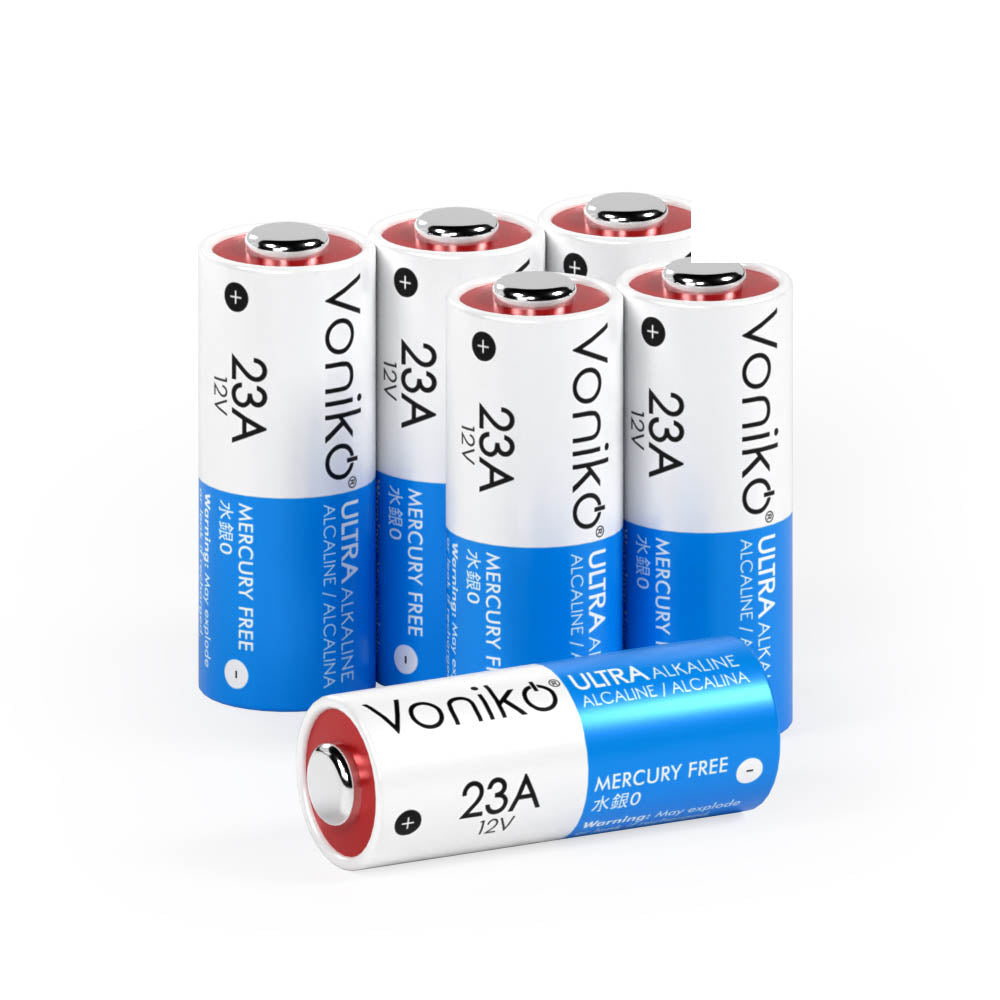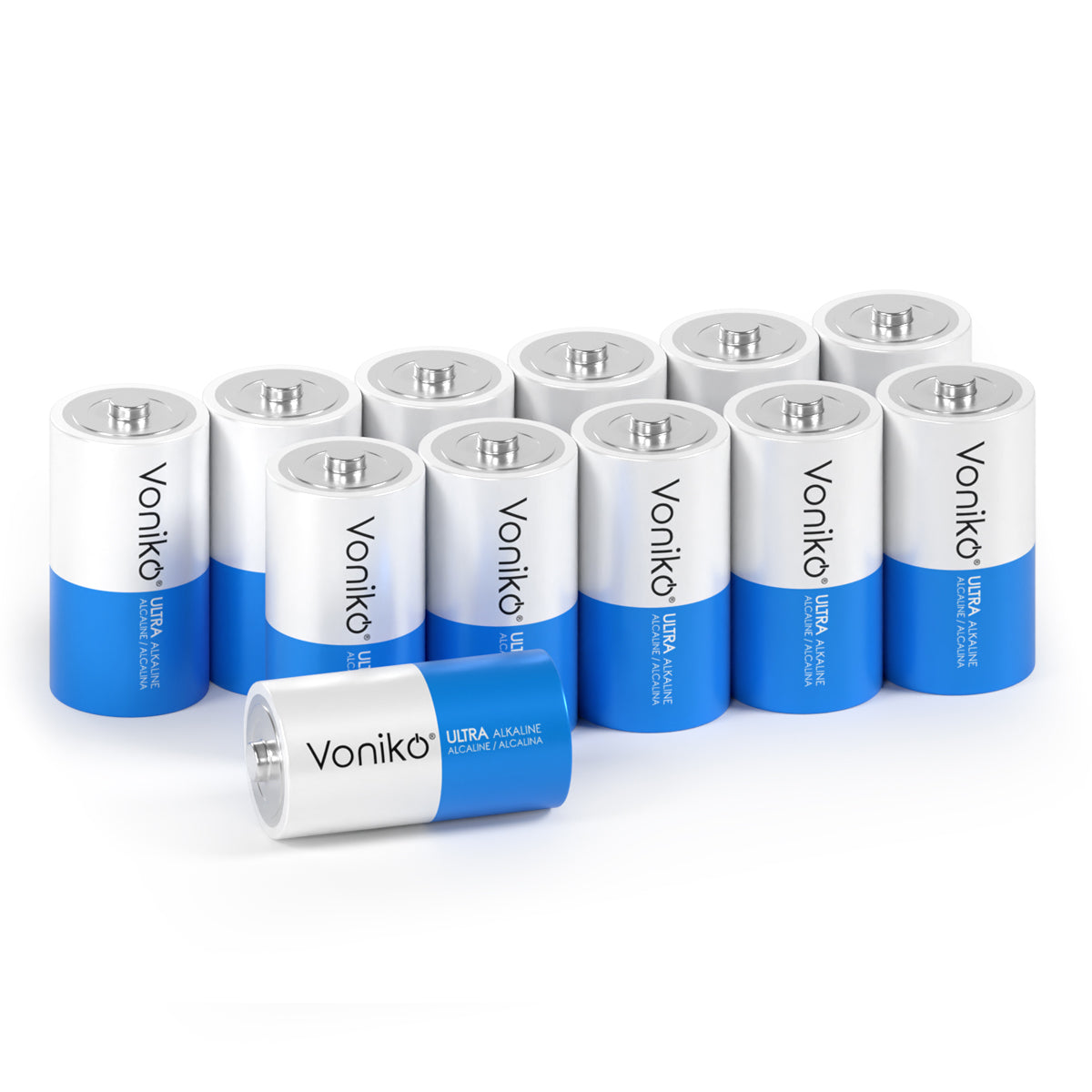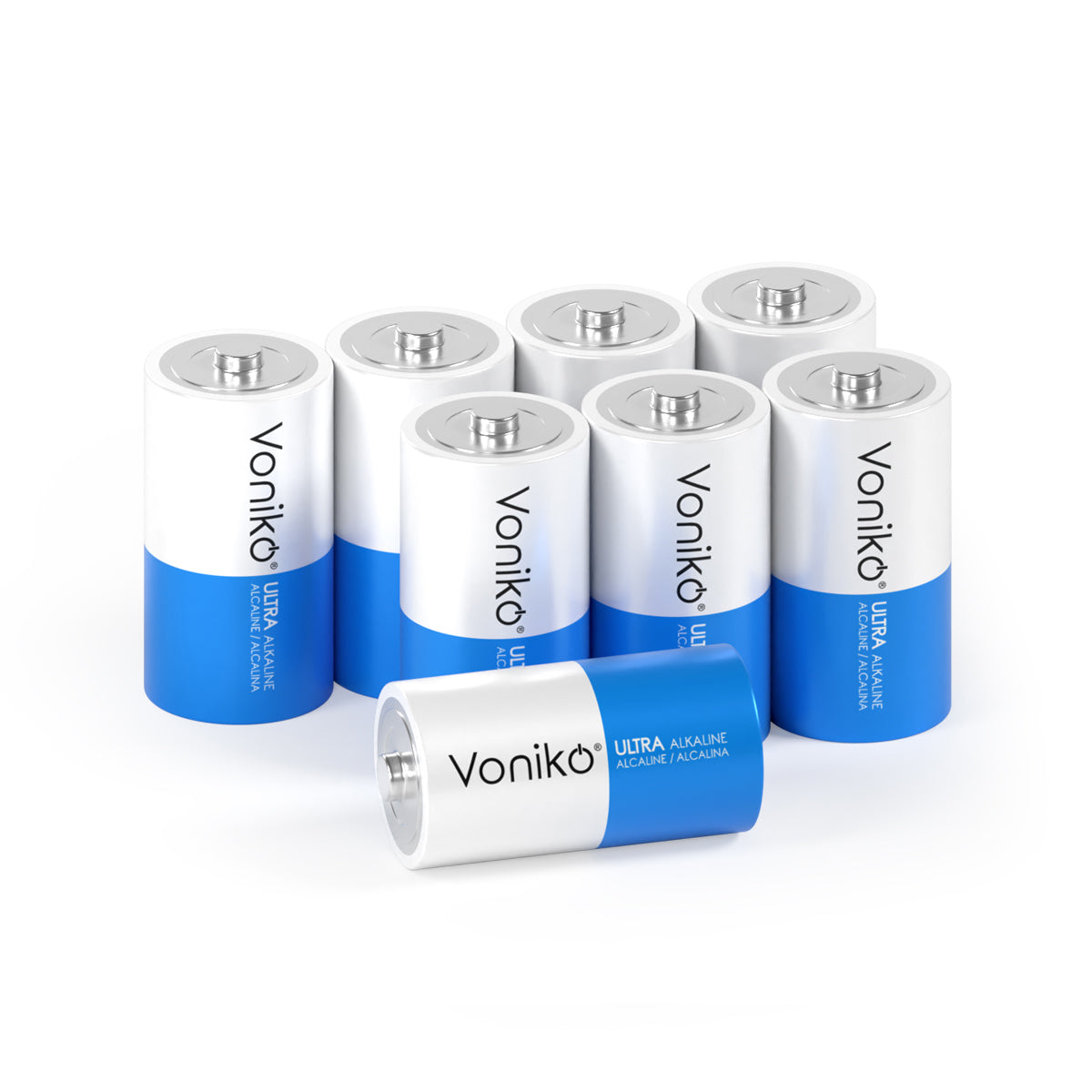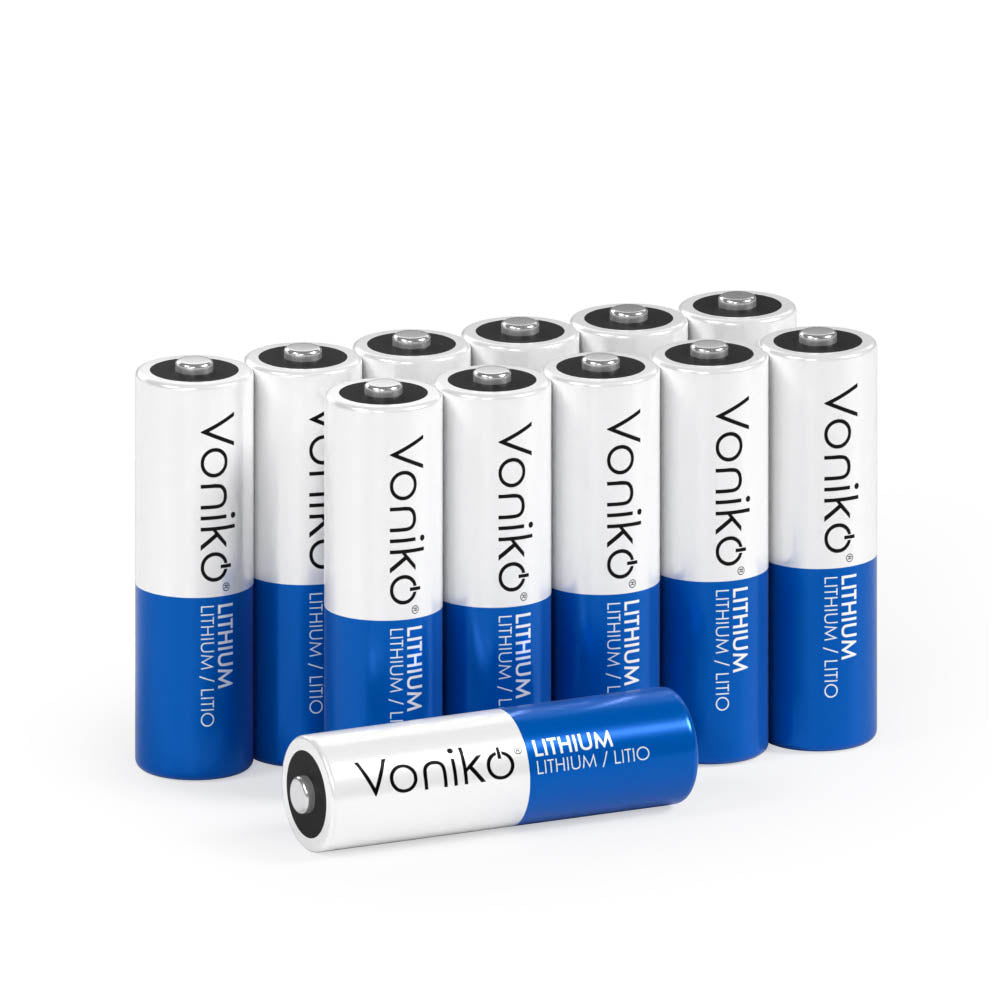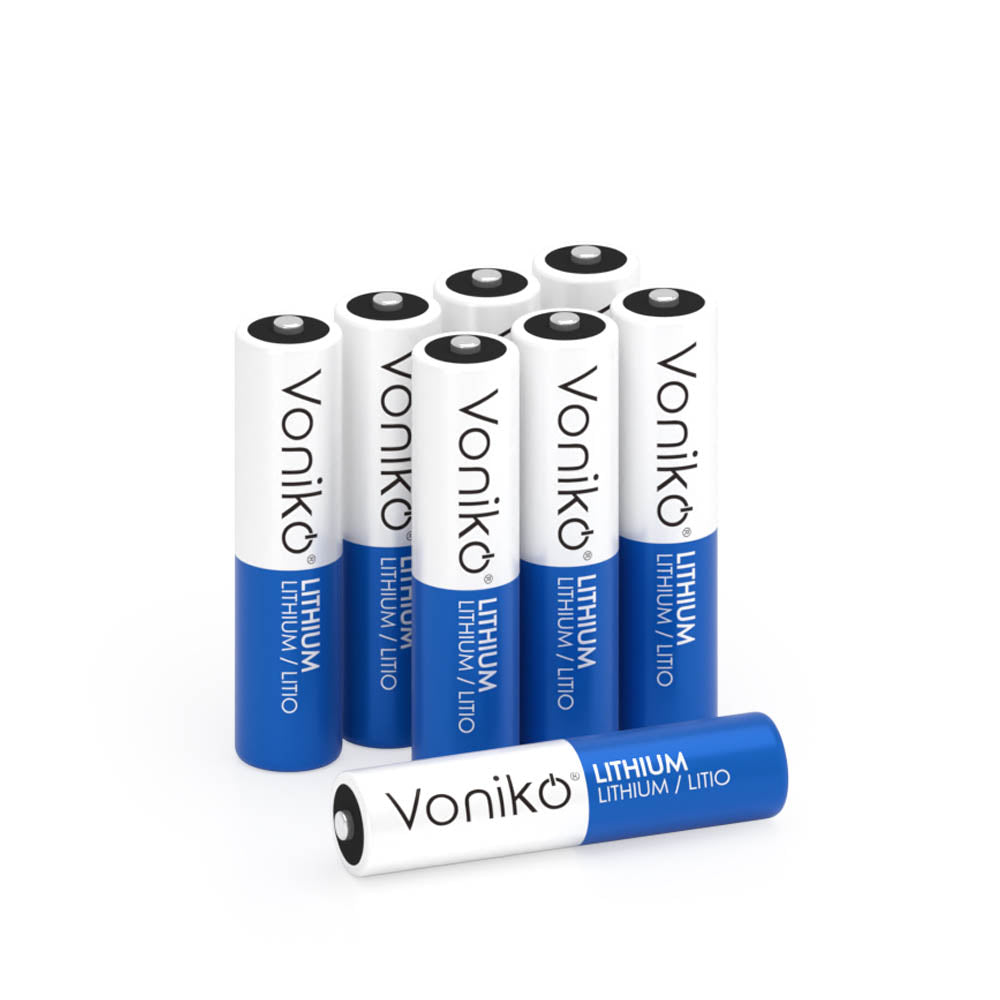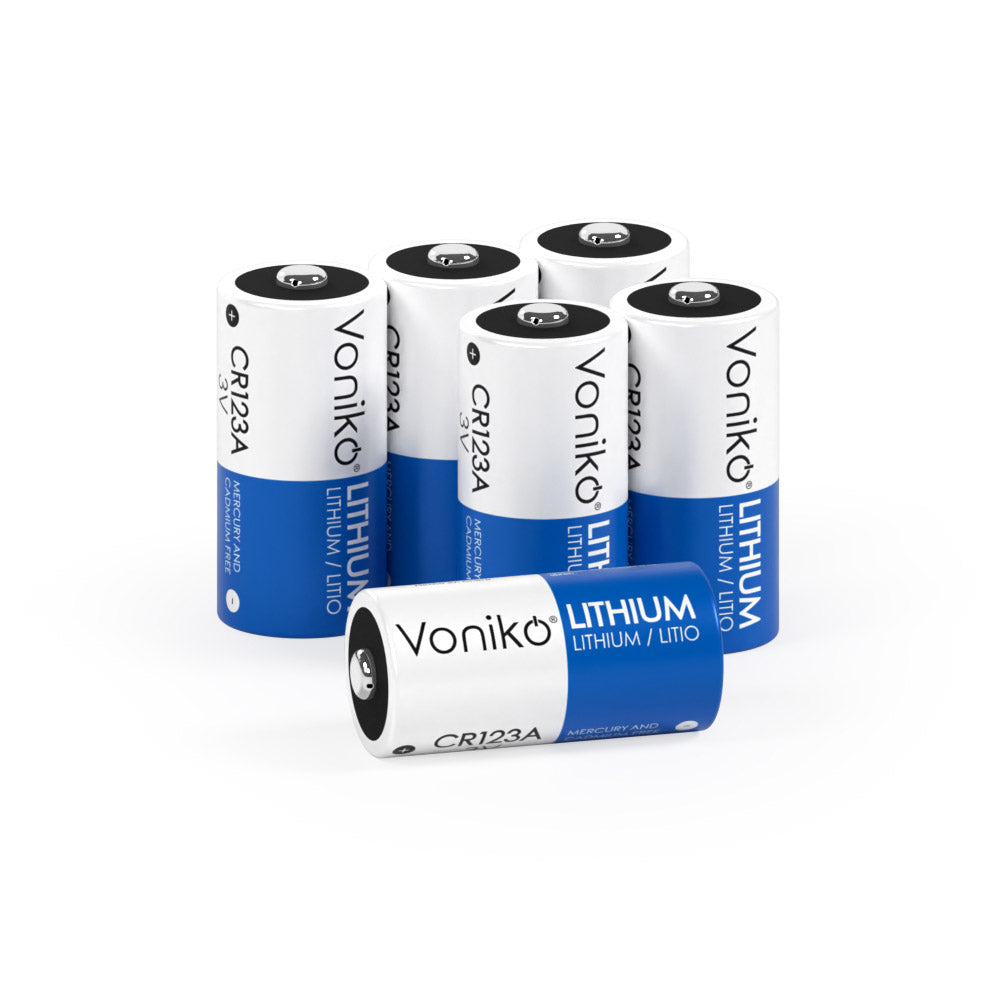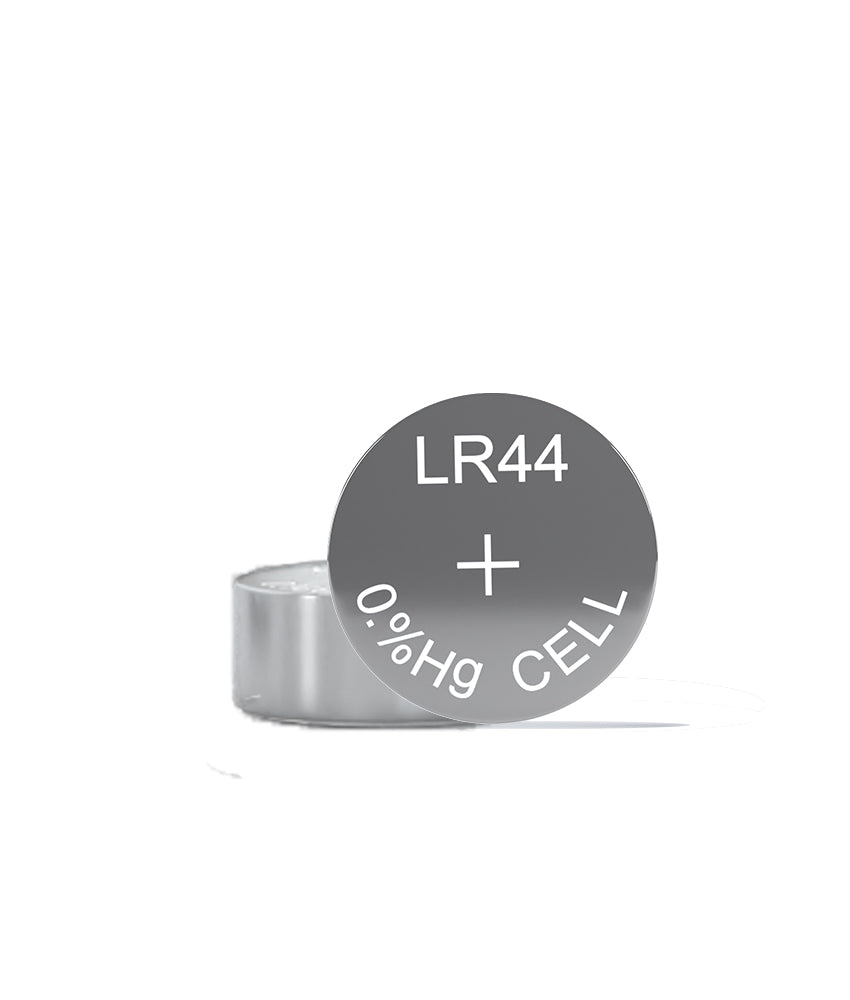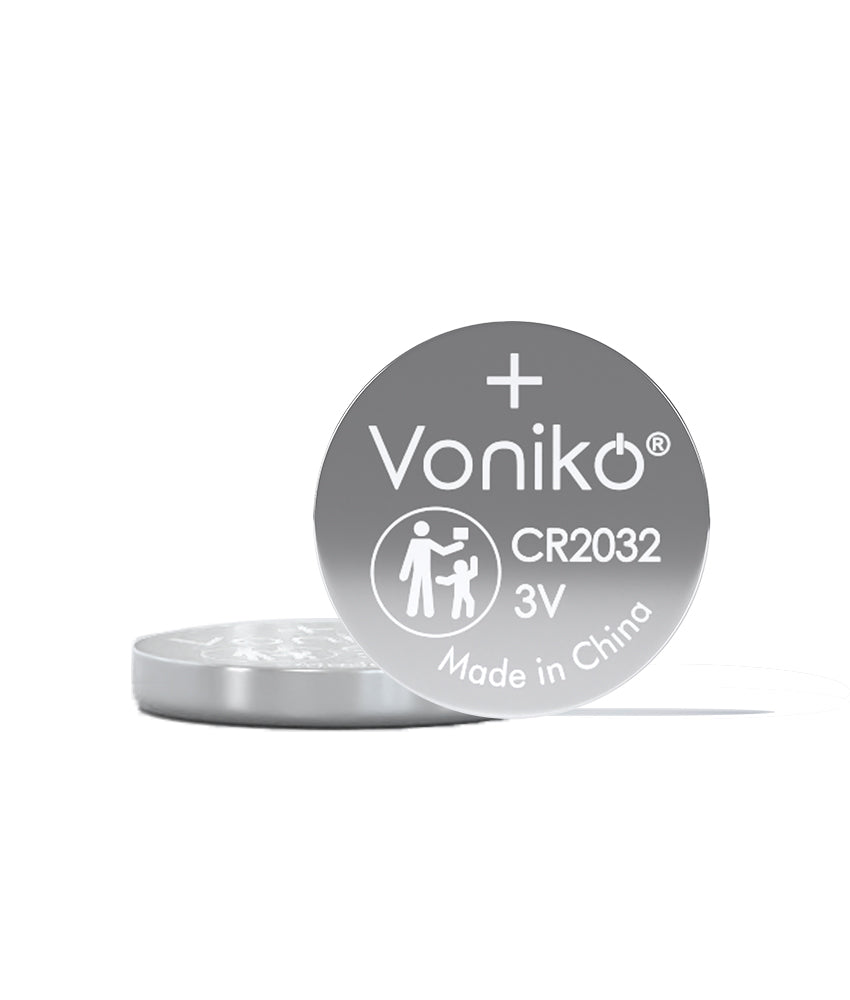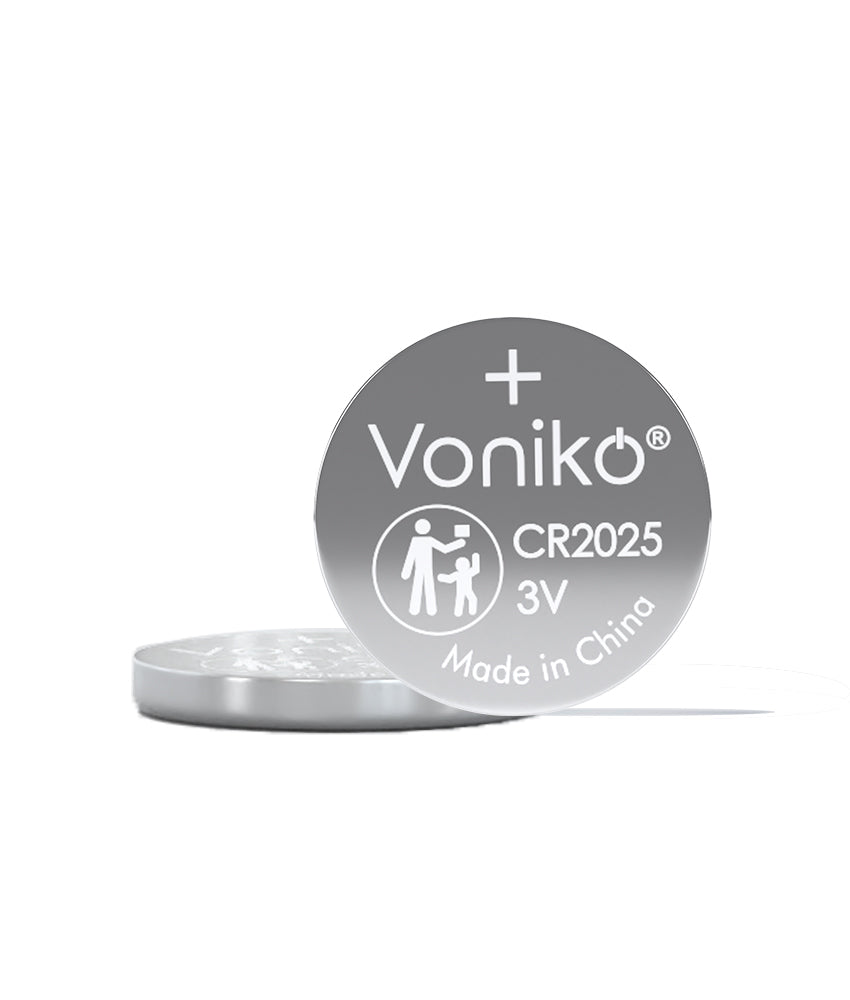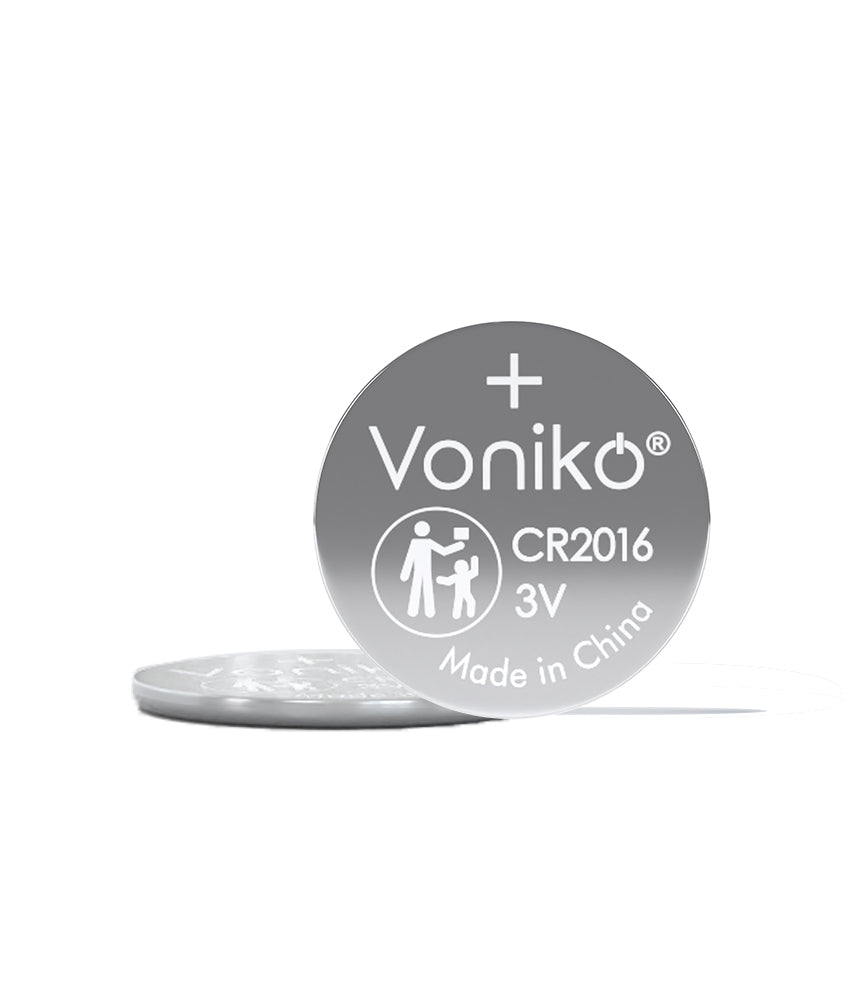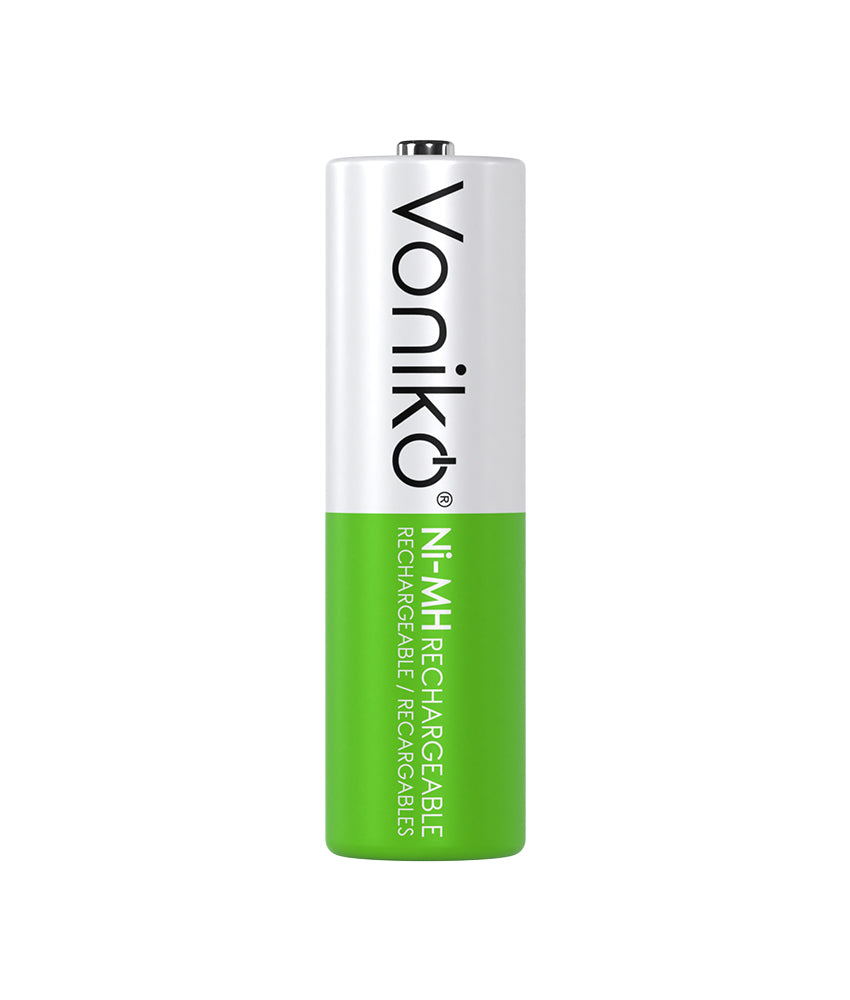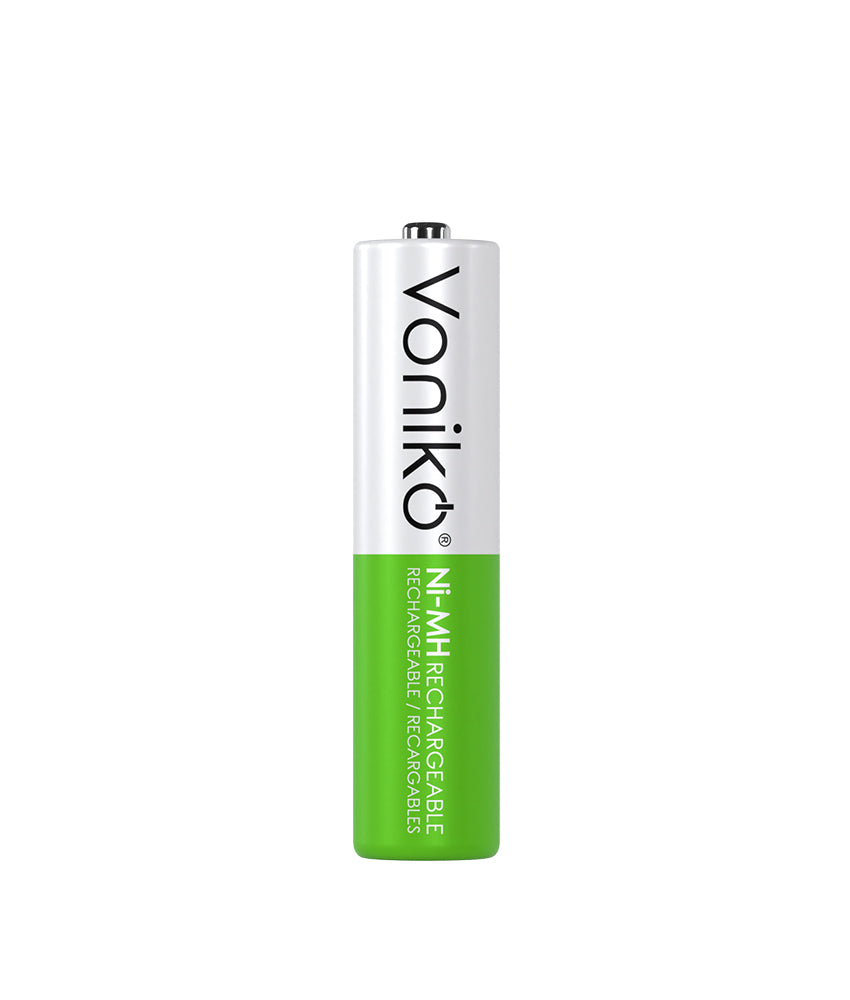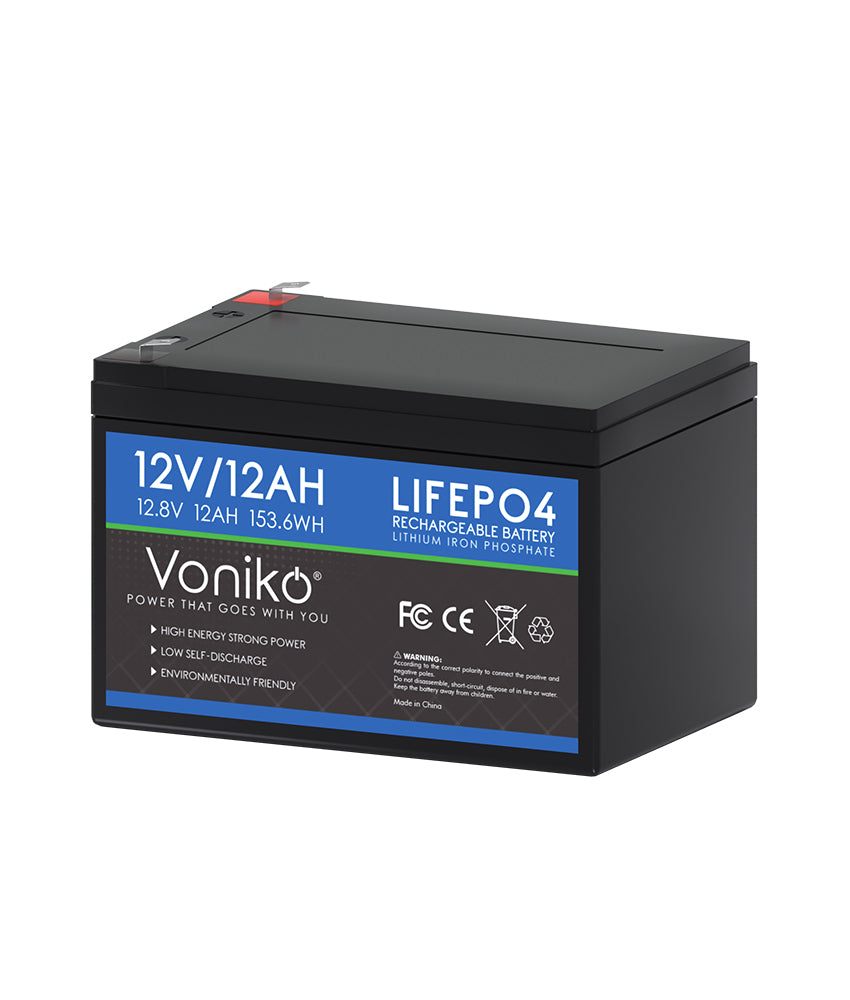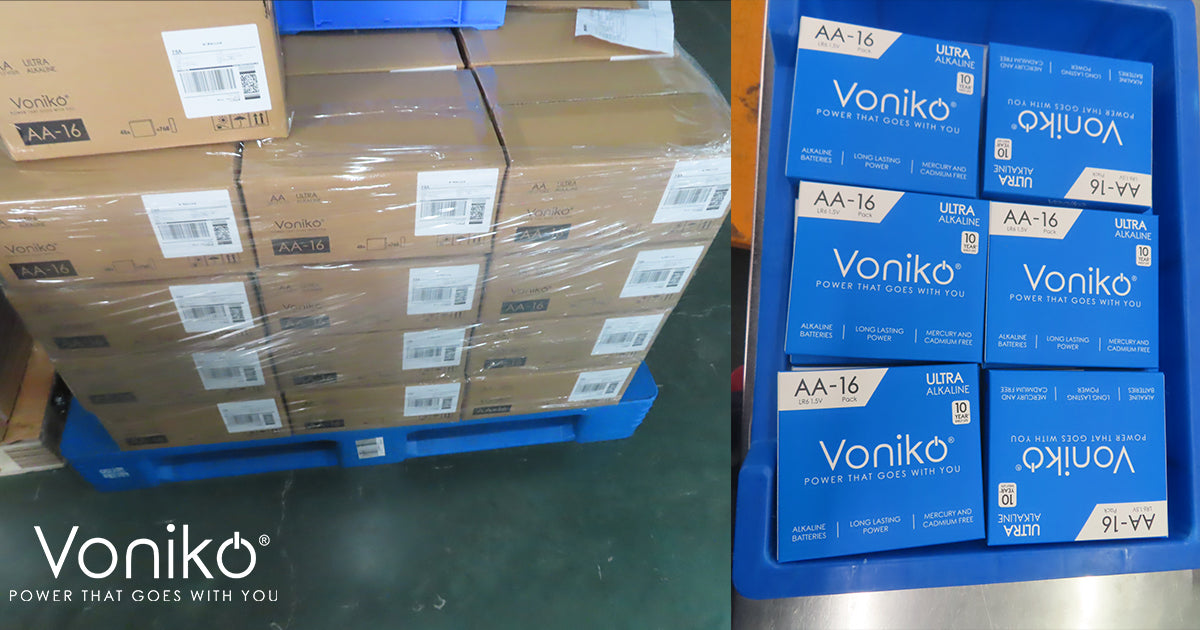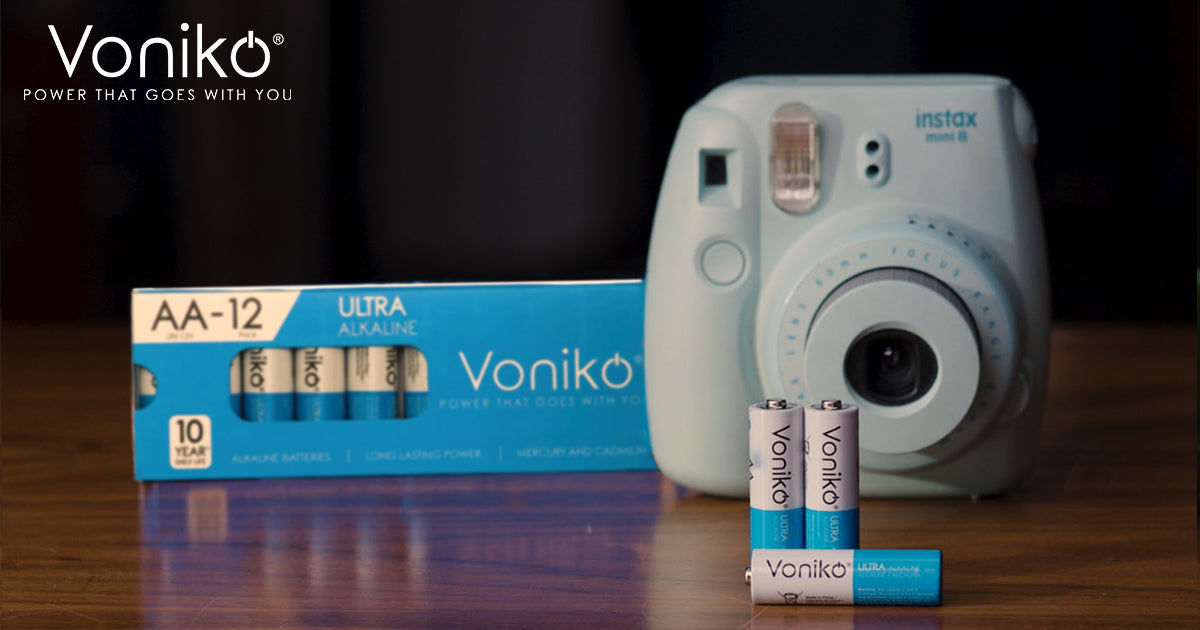Ever wonder why lithium batteries cost more than alkaline ones, or why some batteries work better in extreme temperatures? The answer lies deep inside high-tech manufacturing facilities where completely different processes create these two battery types. While both might look similar from the outside, the manufacturing journey that creates them is as different as making bread versus brewing beer.
Most people think batteries are just simple metal cylinders filled with chemicals, but modern battery manufacturing represents some of the most sophisticated industrial processes on Earth. The differences between alkaline and lithium battery production explain everything from price variations to performance characteristics, and understanding these processes reveals why certain batteries excel in specific applications.
At Voniko®, we're a U.S.-based battery brand known for great value household batteries, and our fully automated smart factories across multiple countries produce both alkaline and lithium batteries using cutting-edge manufacturing processes. With an annual capacity of 6.5 billion pieces, we've perfected both production methods to deliver the quality and performance you expect from every Voniko battery.
The Basic Chemistry Difference
Before diving into manufacturing processes, we should know that alkaline and lithium batteries operate on completely different chemical principles. This fundamental difference drives every aspect of how they're made, from raw material preparation to final assembly.
Alkaline battery chemistry:
Alkaline batteries use zinc powder as the anode (negative terminal) and manganese dioxide as the cathode (positive terminal), with potassium hydroxide serving as the alkaline electrolyte. This chemistry has been refined over decades and represents a mature, well-understood technology.
Lithium battery chemistry:
Our lithium batteries use lithium metal or lithium compounds as the anode, various cathode materials depending on the specific battery type, and specialized organic electrolytes. This chemistry is more complex but delivers higher energy density and better performance in extreme conditions.
Why chemistry matters for manufacturing:
The different chemistries require completely different handling procedures, safety protocols, and production environments. Lithium is highly reactive and requires inert atmospheres during production, while alkaline chemistry is more forgiving but requires precise pH control.
Environmental requirements:
Alkaline battery production can tolerate some humidity and doesn't require special atmospheric controls. Lithium battery production demands moisture levels below 100 parts per million and often requires argon or nitrogen atmospheres to prevent unwanted chemical reactions.
Raw Material Preparation
The manufacturing process differences start with raw material preparation, where the distinct requirements of each chemistry become immediately apparent.
Alkaline battery material prep:
Zinc powder preparation involves careful particle size control and surface treatment to optimize performance. The zinc must be pure but doesn't require the extreme handling precautions needed for lithium materials. Manganese dioxide undergoes grinding and mixing processes to achieve the right particle distribution and conductivity.
Lithium battery material prep:
Lithium metal handling requires specialized equipment and atmospheres to prevent oxidation and moisture absorption. Even trace amounts of water can compromise lithium battery performance, so materials are processed in dry rooms with humidity control systems that would rival semiconductor manufacturing facilities.
Quality control differences:
Alkaline materials undergo standard chemical analysis and particle size testing. Lithium materials require additional testing for moisture content, purity levels that are orders of magnitude more stringent, and specialized handling to maintain integrity throughout the process.
Storage and handling:
Alkaline battery materials can be stored in standard industrial warehouses with basic environmental controls. Lithium materials require climate-controlled storage with inert atmospheres and specialized handling equipment to prevent contamination or degradation.
Cost implications:
The more complex handling and storage requirements for lithium materials contribute significantly to the higher cost of lithium battery production, helping explain why our AA lithium batteries cost more than alkaline alternatives despite their superior 10x longer lasting performance compared to alkaline batteries.
Production Environment Requirements
The production environments for alkaline and lithium batteries are so different they might as well be in different industries entirely. These environmental requirements drive much of the cost and complexity differences between the two battery types.
Alkaline production environment:
Alkaline battery manufacturing takes place in controlled but relatively standard industrial environments. Temperature and humidity are managed for quality purposes, but the tolerances are achievable with conventional HVAC systems. Clean room requirements exist but are less stringent than lithium production.
Lithium production environment:
Lithium battery production requires pharmaceutical-grade clean rooms with Class 100 or better air quality standards. Humidity must be maintained below 100 ppm, requiring sophisticated dehumidification systems. Many processes occur under inert atmospheres using argon or nitrogen gas.
Air quality management:
Alkaline facilities filter air to remove dust and contaminants but don't require the ultra-pure environments needed for lithium production. Lithium facilities use multi-stage air filtration systems and positive pressure controls to maintain cleanliness levels that exceed most semiconductor facilities.
Temperature control:
Both processes require temperature control, but lithium production demands much tighter tolerances. Small temperature variations can affect lithium metal stability and electrolyte performance, requiring precision climate control systems.
Safety considerations:
Alkaline production involves standard industrial safety protocols for handling chemicals and operating machinery. Lithium production requires specialized safety equipment for handling reactive metals, emergency response procedures for lithium fires, and extensive training for personnel working with hazardous materials.
Facility investment:
The environmental control systems required for lithium production represent a massive capital investment compared to alkaline facilities. This infrastructure requirement is one reason why lithium battery production is concentrated among fewer, larger manufacturers.
Assembly Process Differences
The actual assembly of alkaline and lithium batteries involves completely different procedures, equipment, and precision requirements that reflect their distinct chemistries and performance targets.
Alkaline battery assembly:
The process begins with steel can preparation, where the negative terminal (cathode) is formed. Zinc powder is mixed with potassium hydroxide electrolyte to form a gel, which is then inserted into the can. A separator paper prevents short circuits, followed by insertion of the manganese dioxide cathode material around a carbon rod current collector.
Lithium battery assembly:
Lithium assembly starts with precision-machined cases that must maintain perfect seals to prevent moisture ingress. Lithium metal anodes are handled in inert atmospheres and precisely positioned to prevent contact with other materials. Organic electrolytes are added using precision metering systems under controlled conditions.
Precision requirements:
Alkaline batteries require good dimensional control and proper material distribution, but tolerances are measured in fractions of millimeters. Lithium batteries demand precision measured in micrometers, with component positioning and electrolyte volumes controlled to extremely tight specifications.
Automation levels:
Both processes use extensive automation, but lithium production requires more sophisticated robotic systems capable of operating in inert atmospheres. These systems must handle reactive materials safely while maintaining the precision necessary for reliable battery performance.
Quality monitoring:
Alkaline assembly includes in-line testing for voltage, internal resistance, and physical dimensions. Lithium assembly adds moisture monitoring, atmosphere composition verification, and specialized testing for electrolyte distribution and seal integrity.
Speed and throughput:
Alkaline production lines can operate at very high speeds, with our facilities producing thousands of batteries per hour. Lithium production is inherently slower due to the precision requirements and environmental controls, though modern lines still achieve impressive throughput rates.
Electrolyte Systems
The electrolyte systems used in alkaline and lithium batteries represent perhaps the most fundamental difference in their manufacturing processes, requiring completely different handling, preparation, and implementation procedures.
Alkaline electrolyte handling:
Potassium hydroxide electrolyte is an aqueous (water-based) solution that, while caustic and requiring safety precautions, can be handled with standard chemical processing equipment. The electrolyte is mixed with zinc powder to form a paste that's inserted into the battery case using conventional pumping and filling systems.
Lithium electrolyte complexity:
Our lithium batteries use organic electrolyte systems that are extremely sensitive to moisture and require specialized handling throughout the production process. These electrolytes are prepared in moisture-free environments and transferred using sealed systems that prevent any exposure to atmospheric humidity.
Preparation processes:
Alkaline electrolyte preparation involves mixing potassium hydroxide solution to the correct concentration and ensuring proper dispersion with zinc powder. Quality control focuses on pH levels and consistency. Lithium electrolyte preparation requires sophisticated purification processes, moisture removal to parts-per-million levels, and handling in inert atmospheres.
Filling and metering:
Alkaline electrolyte filling uses positive displacement pumps and gravimetric systems to ensure proper amounts in each battery. Lithium electrolyte filling requires precision metering systems that operate in controlled atmospheres, with fill volumes controlled to extremely tight tolerances to ensure optimal performance.
Quality verification:
Alkaline electrolyte quality is verified through pH testing, conductivity measurements, and visual inspection. Lithium electrolyte undergoes extensive analysis including moisture content verification, chemical purity testing, and specialized tests to ensure compatibility with other battery components.
Safety and handling protocols:
Both electrolyte systems require safety protocols, but lithium electrolytes demand additional precautions due to their reactivity and flammability. Personnel handling lithium electrolytes require specialized training and equipment to work safely with these materials.
Quality Control and Testing Procedures
The quality control processes for alkaline and lithium batteries differ significantly in scope, complexity, and the equipment required to ensure reliable performance throughout the battery's operational life.
Alkaline quality control:
Our alkaline batteries with Power Lock technology undergo comprehensive testing including voltage verification, capacity testing under standard loads, leakage resistance testing, and dimensional verification. The testing procedures are well-established and use conventional battery testing equipment.
Lithium quality control complexity:
Lithium battery quality control involves all the standard tests plus specialized procedures for moisture content verification, seal integrity testing, electrolyte compatibility verification, and performance testing under extreme temperature conditions. The testing equipment must often operate in controlled atmospheres.
In-process monitoring:
Alkaline production includes in-line monitoring of key parameters like material distribution, electrolyte pH, and assembly dimensions. Lithium production adds real-time monitoring of atmosphere composition, moisture levels, temperature profiles, and electrolyte properties throughout the manufacturing process.
Performance validation:
Both battery types undergo performance testing, but lithium batteries require additional validation under extreme conditions that simulate their intended applications. This includes temperature cycling, vibration testing, and long-term storage studies to verify our 10 year shelf life claims.
Statistical process control:
Alkaline production uses standard statistical process control methods to maintain quality and identify trends. Lithium production requires more sophisticated data analysis systems that can correlate multiple process variables with final battery performance.
Batch tracking and traceability:
Both processes include batch tracking, but lithium production requires more detailed traceability due to the complex supply chains for specialized materials and the critical nature of many lithium battery applications.
Equipment and Technology Differences
The manufacturing equipment used for alkaline and lithium battery production represents different generations of technology, with lithium production pushing the boundaries of industrial automation and precision manufacturing.
Alkaline production equipment:
Alkaline battery manufacturing uses robust, high-speed production equipment designed for continuous operation. The machinery includes powder handling systems, paste mixers, filling equipment, and assembly machines that operate reliably in normal industrial environments.
Lithium production technology:
Lithium battery manufacturing requires specialized equipment designed to operate in inert atmospheres with extreme precision. This includes robotic handling systems, precision metering equipment, and assembly machines that maintain positioning accuracy measured in micrometers.
Automation sophistication:
While both processes are highly automated, lithium production uses more advanced robotics and control systems. These systems must coordinate multiple process variables simultaneously while maintaining the environmental controls necessary for successful lithium battery production.
Maintenance requirements:
Alkaline production equipment requires standard industrial maintenance practices. Lithium production equipment needs specialized maintenance procedures that account for the controlled atmospheres and precision requirements, often requiring complete atmospheric cycling for major maintenance operations.
Investment and costs:
The specialized equipment required for lithium production represents a significantly higher capital investment compared to alkaline manufacturing equipment. This cost difference contributes to the higher price of lithium batteries but enables the superior performance characteristics customers expect.
Technology evolution:
Alkaline production technology has matured over decades and focuses on incremental improvements in speed and efficiency. Lithium production technology continues to evolve rapidly, with new innovations in automation, atmospheric control, and precision manufacturing appearing regularly.
Environmental and Safety Considerations
The environmental and safety requirements for alkaline and lithium battery manufacturing create distinctly different operational challenges and regulatory compliance obligations.
Alkaline environmental impact:
Alkaline battery production generates typical industrial waste streams that are well-understood and manageable with conventional treatment systems. Waste water treatment focuses on pH neutralization and metal recovery, while solid waste includes recyclable materials like steel and manageable chemical residues.
Lithium environmental complexity:
Lithium battery production creates waste streams that require specialized handling and treatment. Solvent recovery systems reclaim organic electrolytes, while lithium-containing waste requires careful management to prevent environmental release. Air handling systems must manage solvent vapors and inert gases.
Safety protocols:
Alkaline production safety focuses on standard chemical handling procedures, personal protective equipment for caustic materials, and mechanical safety around high-speed production equipment. Lithium production adds requirements for handling reactive metals, managing flammable solvents, and emergency response procedures for lithium fires.
Regulatory compliance:
Both processes must comply with industrial safety and environmental regulations, but lithium production faces additional scrutiny due to the specialized chemicals and processes involved. This includes stricter reporting requirements and more frequent inspections.
Worker training:
Alkaline production requires standard industrial training for chemical handling and equipment operation. Lithium production demands extensive specialized training covering reactive material handling, emergency procedures, and the complexities of operating in controlled atmospheres.
Emergency preparedness:
Alkaline facilities require standard industrial emergency response capabilities. Lithium facilities need specialized equipment and procedures for lithium fires, which cannot be extinguished with water, and must have systems for managing potential releases of reactive materials.
Cost Structure and Economic Implications
The manufacturing process differences between alkaline and lithium batteries create fundamentally different cost structures that explain the price differences consumers see and influence strategic decisions about battery technology adoption.
Alkaline cost structure:
Alkaline battery manufacturing benefits from mature, optimized processes with relatively low capital requirements and straightforward material costs. The primary cost drivers are raw materials (zinc, manganese dioxide, steel), energy for production, and labor for operation and maintenance.
Lithium cost structure:
Lithium battery production involves higher costs across every category: specialized raw materials, sophisticated production equipment, complex facility requirements, specialized labor, and extensive quality control systems. These costs are partially offset by the superior performance that commands premium pricing.
Capital investment differences:
Building an alkaline battery production facility requires significant but conventional industrial investment. Establishing lithium production capability demands specialized facilities, advanced equipment, and extensive infrastructure for environmental control, representing much higher capital requirements.
Operating cost variations:
Alkaline production operates with relatively predictable costs for materials, energy, and labor. Lithium production includes additional costs for inert gases, specialized maintenance, advanced quality control, and the higher skill levels required for personnel.
Scale economics:
Both processes benefit from scale, but lithium production shows steeper learning curves and greater sensitivity to capacity utilization. The complex nature of lithium manufacturing means that small-scale production is particularly challenging to justify economically.
Market positioning:
The cost structure differences enable different market positioning strategies. Our alkaline batteries with 40% longer lasting performance compared to competitor brands compete primarily on value, while our lithium batteries justify premium pricing through superior performance in demanding applications.
Conclusion
At Voniko®, our global manufacturing network utilizes both alkaline and lithium production technologies to deliver the right battery for every application. Whether you need our alkaline batteries with 10 year shelf life for everyday devices or our lithium batteries for demanding applications requiring 10x longer lasting performance, understanding these manufacturing differences helps explain why we're the professional battery brands.
Our mission to shape the future of batteries and enable consumers to live life to the fullest is supported by continuous investment in both alkaline and lithium manufacturing technologies. By maintaining excellence in both production methods, we fulfill our promise: "Power that goes with you!" – regardless of which battery chemistry best serves your needs.
The complexity and sophistication of modern battery manufacturing represents one of the unsung marvels of industrial technology. Every time you pick up one of our batteries, you're holding the result of some of the most advanced manufacturing processes on Earth, optimized to deliver reliable power exactly when and where you need it most.


